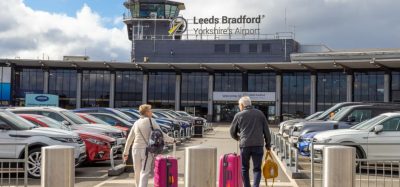The clock is ticking for ADS-B
Posted: 3 October 2012 | Greg Dunstone, ADS-B Programme Manager, Airservices Australia | No comments yet
Airservices Australia is continuing the roll-out of Automatic Dependant Surveillance Broadcast (ADS-B) technology – a satellite-based technology enabling aircraft to be accurately tracked by air traffic controllers and other pilots without the need for conventional radar.
Responsible for providing air traffic sur – veillance services for Australia’s 56 million square kilometres of airspace, Airservices Australia has been a world leader in the development and implementation of ADS-B technology. Currently, Australia’s ADS-B network is supported by 29 duplicated ground stations nationwide, plus 14 ADS-B capable multilateration sites in Tasmania and 16 sites in the Sydney basin.
These are now delivering continuous surveillance of aircraft operations high level airspace across western, central and northern Australia where radar coverage does not currently exist. A further 14 ground stations are being considered to support the needs of airlines, regional and general aviation.
Airservices Australia is continuing the roll-out of Automatic Dependant Surveillance Broadcast (ADS-B) technology – a satellite-based technology enabling aircraft to be accurately tracked by air traffic controllers and other pilots without the need for conventional radar.
Responsible for providing air traffic sur – veillance services for Australia’s 56 million square kilometres of airspace, Airservices Australia has been a world leader in the development and implementation of ADS-B technology. Currently, Australia’s ADS-B network is supported by 29 duplicated ground stations nationwide, plus 14 ADS-B capable multilateration sites in Tasmania and 16 sites in the Sydney basin.
These are now delivering continuous surveillance of aircraft operations high level airspace across western, central and northern Australia where radar coverage does not currently exist. A further 14 ground stations are being considered to support the needs of airlines, regional and general aviation.
In addition, Airservices Australia and the Indonesian Directorate General of Civil Aviation began exchanging ADS-B data between the Australian and Indonesian’s Flight Information Region (FIR) in November 2010. A world-first, the ADS-B data exchange allows air traffic controllers to precisely track aircraft up to 150 nautical miles (278km) inside each country’s airspace. ADS-B has also extended Airservices Australia’s real-time surveillance of air traffic out towards the boundary of Australia’s FIR with New Zealand, midway across the Tasman Sea using a ground station on Lord Howe Island.
Australia’s air traffic control surveillance future is tied to ADS-B technology for air navigation and traffic separation. Airservices Australia continues to urge airlines and operators to fit their aircraft with ADS-B ahead of a mandated fitment deadline of 12 December 2013. After this, ADS-B will be required for flight in Australian airspace at and above 29,000 feet (FL290). However, airlines and operators should now be taking note of other key dates for fitment of the technology.
From 4 September 2012, air traffic control will be providing ADS-B separation services to all aircraft that are ADS-B Out capable, operating outside of radar coverage. Whilst individual aircraft approvals will no longer be required, aircraft operators must ensure that ADS-B transmissions comply with Civil Aviation Orders and that flight crews are adequately trained to operate the ADS-B equipment, including knowledge of the appropriate phraseology and correct entry of Flight ID. From this date, operators of ADS-B equipped aircraft lodging flight plans should enter RMK/ADSB in the Remarks field.
Australia’s aviation regulator, the Civil Aviation Safety Authority (CASA), requires ADS-B transmissions to be disabled before flight if the aircraft’s ADS-B avionics are not in compliance with the CASA standards. Operators who become aware their aircraft have non-complying ADS-B avionics fitted, or are in doubt of compliance status, should contact CASA or Airservices Australia as soon as possible.
The resources boom currently being experienced in the state of Western Australia shows no signs of slowing, with some operators predicting a doubling of fly-in, fly-out (FIFO) operations over the next two to three years.
The recent traffic growth attributed to FIFO operations has been exponential with Perth Airport, the capital city airport for Western Australia and the hub for this growth, experiencing a rise of over eight per cent in the past year alone.
Operators who have already installed ADS-B are reaping the benefits of radar-like separation including Brisbane-based Alliance Airlines which has, initially, fitted ADS-B to its fleet of Fokker 1 00 aircraft operating in Western Australia.
“Like many operators, we were suffering from the heavy congestion in areas of Western Australian airspace and we saw ADS-B as a solution,” said Alliance Airline’s Managing Director, Scott McMillan. “Having seen Airservices Australia’s presentation on ADS-B last year, it really confirmed for us that fitting ADS-B was the way to go. By fitting ADS-B, we’re playing our part in resolving the air traffic issues in Western Australia.”
Alliance Airlines has seen the benefits of ADSB with improved flight times and routings in Western Australia. “It’s been very quick to see the savings from ADS-B,” said McMillan. “Not only from a cost point of view, but it has also meant an increase in safety and better service to our customers. The remainder of our F100s will be fitted as they come through their C checks and I expect they will all be fitted by the end of this year – a year ahead of the mandate.”
Operating two Fokker 70LRs and five Fokker 50s, with the latter in the process of employing the technology, McMillian explained: “We are working on our Fokker F50 installations at the moment. The 50s have a ceiling of 25,000 feet but as they fly over Woomera, out of traditional radar range every day, there will be some considerable benefit.”
Alliance Airlines’ pilots are seeing the benefits too with their desired routes becoming immediately available from air traffic control. “Our pilots no longer have to make their en route position reports to ATC,” said McMillan. “After many years of procedural separation, it’s taking a little while for them to get used to less chatter with controllers during flight.”
Australian airlines and operators such as Virgin Australia, Qantas, Skywest, Jetstar, Regional Express, Pel-Air, Tiger Airways, the Royal Flying Doctor Service and National Jet are also now ADS-B equipped using a variety of Boeing, Airbus, Saab, Embraer and Beechcraft aircraft types.
Beyond December 2013, the next key milestone for the transition to ADS-B will occur on 6 February 2014. CASA regulations published in late-August require all new IFR aircraft registrations in Australia to be ADS-B Out capable. Most new transponder installations after this date in older IFR aircraft will need to be ADSB capable too.
Two years later, on 6 January 2016, all IFR aircraft operating within 500nm to the north and east of Perth, Western Australia, will be required to be ADS-B Out equipped. A year on, by 6 January 2017, all Australian registered IFR aircraft flying within Australia’s airspace will be required to operate using ADS-B.
With just over a year to go for the FL290 requirement, 289 of 424 major Australian airliner aircraft, approximately 68 per cent, have already been fitted with ADS-B Out capability. Airservices Australia is seeing over 70 per cent of all international flights flying in its flight information region getting the ADS-B service.
Airservices Australia is keen to point out the advantages of using ADS-B as they are there for the taking. While applauding domestic who have already fitted ADS-B, Airservices Australia reminds the global industry that the clock is ticking for getting fitted for ADS-B.
About the author
Greg Dunstone has led Airservices Australia’s ADS-B initiatives since proposing the first trial in 2000. His pioneering work and leadership resulted in the successful deployment of this technology in Australia. Greg Dunstone has also chaired ICAO’s Asia-Pacific ADS-B Task Force since 2003 supporting the global adoption of 1090 MHz data links and driving regional implementation in the Asia-Pacific Region. He also works closely with European, American and Canadian ADS-B programme leaders to foster global harmonisation.
Stay Connected with International Airport Review — Subscribe for Free!
Get exclusive access to the latest airport and aviation industry insights from International Airport Review — tailored to your interests.
✅ Expert-Led Webinars – Gain insights from global aviation leaders
✅ Weekly News & Reports – Airport innovation, thought leadership, and industry trends
✅ Exclusive Industry Insights – Discover cutting-edge technologies shaping the future of air travel
✅ International Airport Summit – Join our flagship event to network with industry leaders and explore the latest advancements
Choose the updates that matter most to you.
Sign up now to stay informed, inspired, and connected — all for free!
Thank you for being part of our aviation community. Let’s keep shaping the future of airports together!
Issue
Related topics
Air traffic control/management (ATC/ATM), Airside operations


















